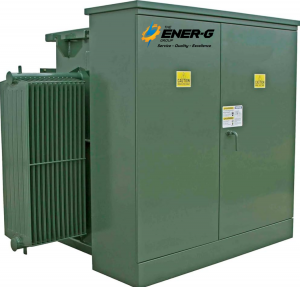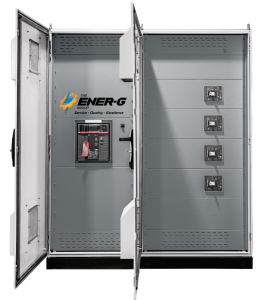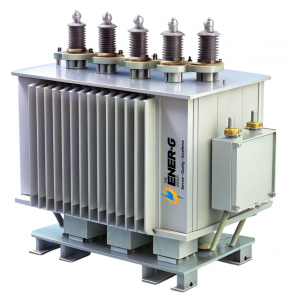ELECTRICAL INFRASTRUCTURE LEAD TIMES
CALGARY , ALBERTA, CANADA, February 21, 2025 /EINPresswire.com/ -- As the demand for electrical infrastructure continues to rise in North America, a concerning trend is emerging: lead times for critical electrical components are becoming increasingly longer. According to Britt Kulczycki, CEO of The ENER-G Group, this delay in production and delivery is a significant challenge for companies, contractors, and industries relying on timely electrical infrastructure solutions.The Growing Crisis in Electrical Infrastructure Lead Times
The issue of extended lead times has grown more prevalent in the past few years, particularly for essential components like transformers, switchgear, and panelboards. With ongoing global supply chain disruptions, unpredictable raw material shortages, and logistical bottlenecks, North American industries have found themselves facing a mounting challenge in getting their electrical systems up and running on schedule.
"Lead times have ballooned from weeks to months, and in some cases, even over a year. This is unacceptable for any business or project that relies on efficient power delivery," Kulczycki said. "We’re seeing projects being delayed, budgets stretched, and companies left in a state of uncertainty as they wait for components to arrive."
The issue is exacerbated by the growing demand for energy-efficient systems, renewable energy solutions, and sustainable infrastructure developments. As these technologies gain traction, the need for modern, reliable, and efficient electrical components has surged, further straining the supply chain.
The Impact of Tariffs Under the Trump Administration
One of the key contributors to the ongoing crisis is the imposition of tariffs on imported electrical equipment under the Trump administration. In 2018, the U.S. government introduced tariffs on Chinese-made goods, including electrical components and equipment. While the intention was to bolster U.S. manufacturing, the effect has been the opposite in many cases—causing price hikes and reduced availability of critical imports.
For companies like The ENER-G Group, which imports essential electrical components from around the world, the tariffs have created a "perfect storm" of uncertainty. Britt Kulczycki explains, "The tariffs have created fear in the market, causing many manufacturers to pull back from importing goods to North America. What used to be a reliable source for products has now become a much riskier and costlier endeavor."
As a result, many international suppliers have started to reconsider their involvement in North American markets. This pullback in supply, combined with the tariffs, has pushed prices higher and added months of delay to manufacturing and shipping times. The ripple effect is significant—companies that rely on these imports for large-scale electrical projects find themselves facing severe financial and operational challenges.
The Road Ahead: How North America Can Address This Growing Crisis
As the electrical infrastructure crisis continues to unfold, Britt Kulczycki believes that both industry leaders and policymakers need to work together to address these issues head-on. "The electrical industry is at a crossroads. We have to figure out how to mitigate these delays and reduce dependency on international imports. Whether through investing in local manufacturing or reworking tariff policies, action is needed before these delays threaten the future of our infrastructure projects."
The road ahead may involve greater domestic production of electrical equipment, technological innovation, and building stronger, more resilient supply chains to meet the growing demand for energy solutions. However, in the short term, Kulczycki urges companies to seek out alternative solutions, such as surplus markets, secondary suppliers, and strategic partnerships to alleviate the impact of delays.
For now, industries across North America must adapt to longer wait times and higher prices. Yet, with innovation and industry collaboration, there is hope that the electrical infrastructure lead time crisis can be mitigated.
Conclusion
The electrical infrastructure crisis in North America, exacerbated by growing lead times and the lasting impact of tariffs, is creating significant challenges for businesses and industries. With longer wait times and fewer options for importing critical components, the situation has become increasingly dire. Britt Kulczycki remains optimistic, urging companies and policymakers to act swiftly in addressing the growing concerns. The clock is ticking—ensuring a steady, reliable supply of electrical equipment will be key to powering the future of North America’s infrastructure.
As the demand for energy continues to grow, it is more important than ever to find sustainable solutions and innovative approaches to overcome these barriers.
The ENER-G Group is dedicated to finding creative solutions to these challenges. If you're dealing with electrical infrastructure lead time issues or need assistance sourcing equipment quickly, reach out to us today for guidance on how we can help you navigate these obstacles.
Media Contact: ENER-G Group, Public Relations Department, Phone: 1-888-660-7244, Email: info@ener-ggroup.com, Website: www.ener-ggroup.com. For press inquiries or further information, please contact our Public Relations Department at the email above or reach out via phone. We look forward to connecting with you!
PR TEAM
THE ENER-G GROUP
+1 888-660-7244
email us here
Visit us on social media:
LinkedIn
Instagram
Legal Disclaimer:
EIN Presswire provides this news content "as is" without warranty of any kind. We do not accept any responsibility or liability for the accuracy, content, images, videos, licenses, completeness, legality, or reliability of the information contained in this article. If you have any complaints or copyright issues related to this article, kindly contact the author above.




